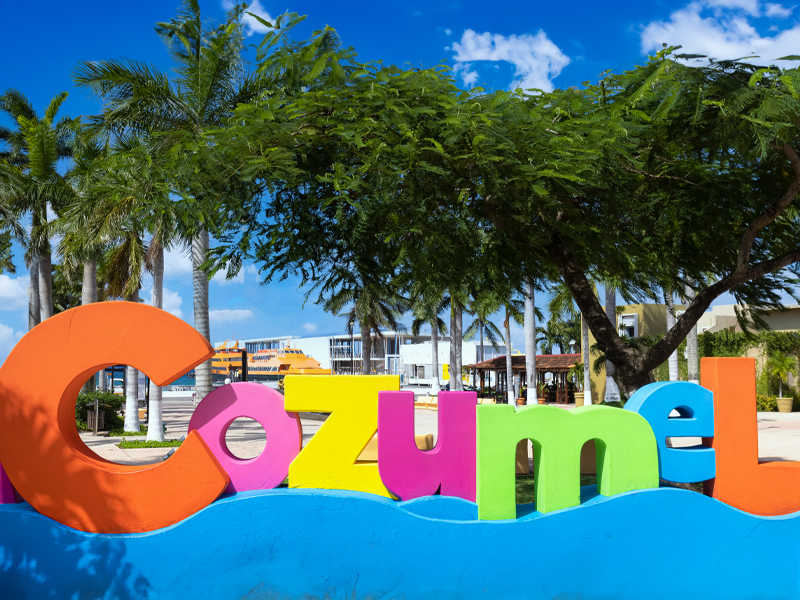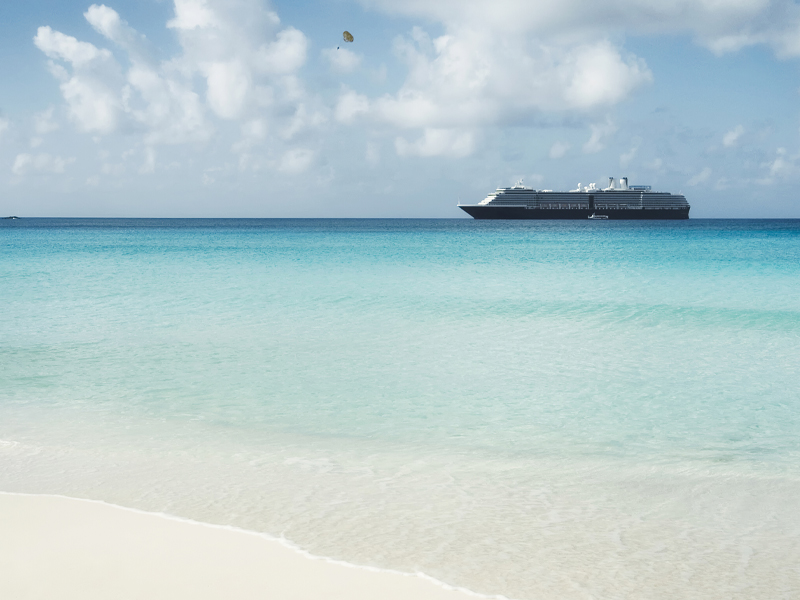Traditional Cruising vs Expedition Cruising: A World of Difference
By: Cruise Scoop Team
When it comes to cruising, most people think of large ships gliding across the ocean, filled with entertainment, dining options, and well-traveled routes. However, the world of cruising has evolved to offer an alternative that is growing in popularity: expedition cruising. While both expedition and traditional cruises offer unforgettable experiences on the water, the differences between them are vast, from the size of the ships to the focus of the journeys. Here’s a breakdown of how these two styles of cruising differ.


| General Differences | Traditional Cruising | Expedition Cruising |
|---|---|---|
| Cruise Expectations | Traditional cruising typically involves: Entertainment, Leisure, Relaxation and Indulgence (Relaxing by the pool, being entertained in the evening, eating and drinking whenever you want, enjoying a set excursion in port/strolling or shopping, bus tours, beach outings, a resort-like experience) |
Expedition cruising typically involves: Enrichment, Adventure, Exploration, Natural Wildlife Viewing (Attending workshops or lectures on wildlife, nature, culture or ecosystems led by experts in the field, sharing stories with other like-minded passengers, viewing wildlife/nature, learning about indigenous cultures, and participating in adventurous excursions) |
| Focus of Cruise | Life onboard – Variety of entertainment / activities / amenities, vast selection of dining and drinking venues, visits to popular tourist destinations and set excursions in each destination. “Partyful” and Decompressing |
The outside world – scenic wonders, nature, local culture, wildlife, historical sights or adventure, soaring mountains, glaciers and floating icebergs. “Purposeful” and Educational |
| Ports and Destinations | They will typical visit tourist destinations (ie. Mexico, Caribbean, Europe, Asia, Hawaii) that are over frequented by many cruise lines. Infrastuctures and in various cases, tourist attractions have been setup specifically for the cruise industry such as Costa Maya. They will stop at ports with docks, harbors, and piers |
They will visit unique, remote, off-the-beaten-path, hard to get to destinations including places with very little to no infrastructure for tourism. Remote places all over the world including uninhabited areas. (Antarctica, Arctic, Galapagos, Norwegian Fjords, Iceland, Svalbard, Greenland) They will stop where the opportunity for nature, wildlife, culture encounters exist regardless of formal port structure. Travel to land is generally by zodiac and then off to shallow waters/land. |
| Itinerary | A strict itinerary with planned ports of call that does not change unless there are weather issues, more fuel efficient routes/ports, or other circumstances beyond the cruise lines control. Eg. Hurricane |
A general but flexible itinerary that changes as opportunities arise. The passengers may be part of the decision making process to change itinerary plans. Eg. Unique wildlife sightings. Most expeditions plan to make 2 landings per day, 1 in the morning and 1 in the afternoon. However, if a sighting occurs at 2am, you will get notified of such sighting immediately. If whales popup as you get ready to zodiac to land, the expedition leader may decide to stay and watch the whales and journey to land in the afternoon. |
| To and From Port | Tender to port or dock at port | Zodiac to landing spot often disembarking in shallow water / tender to port or dock at port depending on cruise line. |
| Dining | 24×7 dining experiences | Set times for breakfast, lunch and dinner |


| Ship Related | ||
|---|---|---|
| Purpose of ship | The ship is the destination for many with the opportunity to disembark at popular destinations for brief visits/set excursions. With a large vessel, you will only be able to visit those ports that can support the vessel size. | The ship serves as a basecamp where all passengers and staff eat, recharge, mingle/share stories, observe the surroundings, and relax between adventures. Being small, it allows you to get into the most remote areas. The journey is part of the adventure |
| Ship Design | Designed for: resort feel, comfort, amenities, entertaining and carrying lots of passengers. Many venues, restaurants, and onboard activities to create a resort like feel for guests. | Designed for: Maximum viewing, comfort, quick and easy embarkation/disembarkation, strengthened hulls for moving through the ice in polar regions, large fuel tanks and food storage areas to allow for longer times in remote areas without re-provisioning. Extensive Observation Decks (Interior and Exterior) and in some cases extendable glass balconies, interactive learning centres, underwater viewing lounge and science centers. |
| # of Passengers | Typically > 500 passengers It seems the larger the better. |
Typically < 500 passengers Smaller to get all passengers off and on the ship quickly. Many of the remote areas have restrictions on the number of passengers that can visit at one time. For example – if you are headed to the Galapagos the number of passengers cannot exceed 100. Antartica has similar restrictions. |
| Staff and Crew onboard | Normal staff – hotel, cleaning, bartenders, wait staff, etc. Depending on the cruise line you may also have special seminars from experts and these tend to be geared towards the interests of the cruise line clientele. |
In addition to the normal staff, you will typically be accompanied by an “Expedition team” made up of an expedition leader and experts in a range of fields including: biologists, cultural historians, geologists, ornithologist, naturalists, photographers, and scientists Certain destinations (eg. Galapagos) have rules stipulating that local experts must be onboard. |
| Amenities onboard | Typically (based on size of ship) many of the following: Lounges/Bars, Restaurants, Pools, Hot Tubs, Shops, Buffet area, Café, Theaters, and 1 Medical Center, Casino |
Typically 1 of each of the following: Lounge/Bar, Restaurant, Pool, Hot Tub, Shop, Medical Center, Fitness Room, Mud Room |
| Seasickness | The bigger the ship the less you feels the waves
Click here to read more about the difference between traveling on large ships vs small ships. |
The smaller the ship, the more you feel the waves |


| Onboard Activities / Entertainment and Excursions | ||
|---|---|---|
| Activities | There will be a wide range of activities onboard for the passengers including bingo, board games, trivia, water slides/water activities, basketball, mini-golf, competitions, karaoke and many others. | Attend expert-led seminars and presentations on various topics including: wildlife, ecosystems, indigenous cultures, etc. On some ships, you can join the crew on the bridge to learn about navigation, take part in an early morning yoga session, gather in the lounge to share stories / mingle with like-minded people or just have a chat with an expert at the bar. On some ships, you can also participate in a citizen science project. |
| Toys Onboard | Generally no toys are available on the ship. Toys would be available through third party tour companies generally for an additional fee. (on some ships, toys are included. ie. SeaDream Yacht Club) | Many ships have all sorts of exciting water toys including: zodiacs, kayaks, paddleboards, wave runners, underwater scooters, underwater video cameras, snorkeling gear, snowshoes, helicopter, submarine and/or submersible and remote operated vehicles (ROVs). Many of which enable you to explore the waters and/or landscapes. |
| Entertainment | A plethora of entertainment from morning to midnight. You will never be bored or without something to see or hear. (Theater productions, music venues, and more) |
You create your own entertainment! The passengers take pleasure in socializing and sharing stories of their adventures that day. The entertainment is also the opportunity to learn from the experts around you and lectures available. |
| Excursions | Excursions are typically for a fee however, depending on the cruise line, some luxury cruise lines offer all inclusive experiences. Set excursions are created for tourists at each port and carried out by third party tour companies at each port. Some examples include: Dolphin Discovery with contained dolphins. Bus tours, beach barbecues, snorkeling in predefined areas. Excursions are curated by the cruise lines. |
Many excursions are included for free including: zodiac cruising and searching/viewing wildlife, kayaking past glaciers and among wild dolphins, camping on ice shelves, polar plunge, hiking over hills and rocky areas in search of penguin colonies, snorkeling or swimming with turtles and sharks. Additional excursions may be included for a fee including diving, exploring the deep in submersibles, etc. These expert-led / guides will share their tips, knowledge and experience.These excursions surround natural wildlife viewing/encounters, cultural exploration, and landmarks/scenic wonders. |
| Wildlife viewing type excursions | In captivity / Controlled environment: zoos, aquariums, (Dolphin encounters) or in some cases in the wild (pigs in the exumas) | In the wild in their natural habitat |
| Included | Depending on ship and experience you may have use of binoculars and beach towels | Mud boots, bonoculars, wetsuits, jackets, and snorkeling gear may be provided on loan or as a gift. |
| Special Considerations | ||
|---|---|---|
| Age Restrictions | No | Yes Generally 6+ |
| Mobility Requirements | No | Yes You must have some level of mobility to get in and out of a zodiac otherwise, you will stay on the ship which limits your adventures. Having said that, however, you will still have great viewing from the ship. |
| Repositioning Cruises | Many Available | Not typically offered |
| Costs | ||
|---|---|---|
| Expected Costs | The cost of a traditional cruise can vary widely, with budget options available alongside luxury experiences. Many cruises offer all-inclusive packages, but passengers should expect to pay extra for excursions, specialty dining, and some onboard activities. Average costs for a typical 7-night caribbean cruise would be $100/night per person. |
An expedition cruise tends to be more expensive due to the specialized nature of the trip, smaller passenger numbers, and the remote destinations visited. However, the value lies in the unique and immersive experiences provided. These cruises offer unparalleled access to remote locations and include expert-led excursions, often bundled with the cruise fare. Average costs for a typical 7-night Antarctica cruise would be $1,600/night per person. |
Traditional Cruising or Expedition Cruising – Which is for you?
Both expedition cruising and traditional cruising offer incredible opportunities to see the world, but the experiences they provide are fundamentally different. Traditional cruises focus on entertainment, relaxation, and well-known destinations, while expedition cruises prioritize exploration, education, and adventure. For travelers seeking comfort and variety in familiar settings, traditional cruising might be ideal. But for those with an adventurous spirit, an expedition cruise offers the chance to embark on a journey of discovery and connection with the natural world.
Ultimately, the best cruise depends on what kind of experience you’re after — lounging by a pool in the Caribbean or standing on the deck as your ship glides through a remote polar fjord, watching penguins and glaciers pass by.
For help in planning your next expedition cruising adventure, contact REVEL around the world – specialists in expedition cruising!